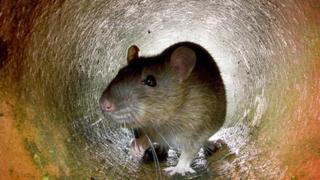Compassionate conservation is ‘seriously flawed’


The idea that you cannot kill any animal is “fatally flawed” as a conservation concept, scientists argue.
Conservation measures should concentrate on species or habitats rather than individual animals, they observe.
Invasive species, they argue, often require mass culling of an animal in order to protect an endangered species.
Under so called “compassionate conservation”, such an approach would not be allowed.
“The argument is that conservation and sustainability needs a variety of approaches. You need to be pluralistic about both the cultural and scientific approaches,” explained study co-author Prof Kartik Shanker from the Indian Institute of Science.
“There is universal agreement that animal welfare is important by which we mean that we should aim to reduce cruelty to animals and this applies to both wild biodiversity and domestic animals.
Prof Shanker said there was agreement that cruelty should be minimised.
“I think the problem arises when compassionate conservation states that you should not kill animals for any reason whatsoever,” he told BBC News.
Individuals matter?
Prof Shanker and his team of co-authors referred to a paper published last year that outlined a framework for compassionate conservation.
They said that it had four key tenets:
- Do not harm,
- Individuals matter,
- Inclusivity, and
- Peaceful co-existence
The team challenged the “no kill” philosophy of this paper.
They wrote: “Our view is that compassionate conservation… is seriously flawed. Compassion need not preclude humanely killing an animal if that reduces the animal’s suffering, enhances the survival of the species or its habitat, or safeguards human life or other more threatened species.”
Prof Shanker added; “For example, let’s look at invasive species.”
“Compassionate conservation states that you should not eradicate invasive species because killing animals is bad. However, there are hundreds of thousands of cats that are, themselves, killing millions of birds. This causes a problem from a conservation point of view.
“If you decide not to kill the cats then to whom are you being compassionate?”
A study in 2010 listed the brown rat as Europe’s most invasive species, and most people accept that rat numbers need to be controlled.
In South Georgia, an island in the southern Atlantic, the population of rats were culled in order to protect endangered bird species, such as the albatross.
Restoring South Georgia’s wildlife paradise
However, other species can present a more challenging dilemma.
The UK government’s policy to cull badgers in order to stem the spread of bovine TB, which can infect cattle herds, causing them to be destroyed, has been controversial.
In southern Asia and southern Africa, there are cases where charismatic species, such as big cats or elephants, come into conflict with human settlements, endangering lives and livelihoods.
In these cases, is it right and proper to destroy the offending animal?
The compassionate conservation approach is widely viewed as having its base in privileged, western, and largely urban centres.
“It is clear that there are numerous incidences where taking a compassionate conservation approach clearly does not look at the larger goals of biodiversity conservation,” Prof Shanker argued.
He said that imposing a different world view on a local community often failed to respect the people’s values and culture.
“Therefore, imposing such a view, would make it very hard to convince that community of the value of changing their way of doing things in order to protect a species or habitat.”


